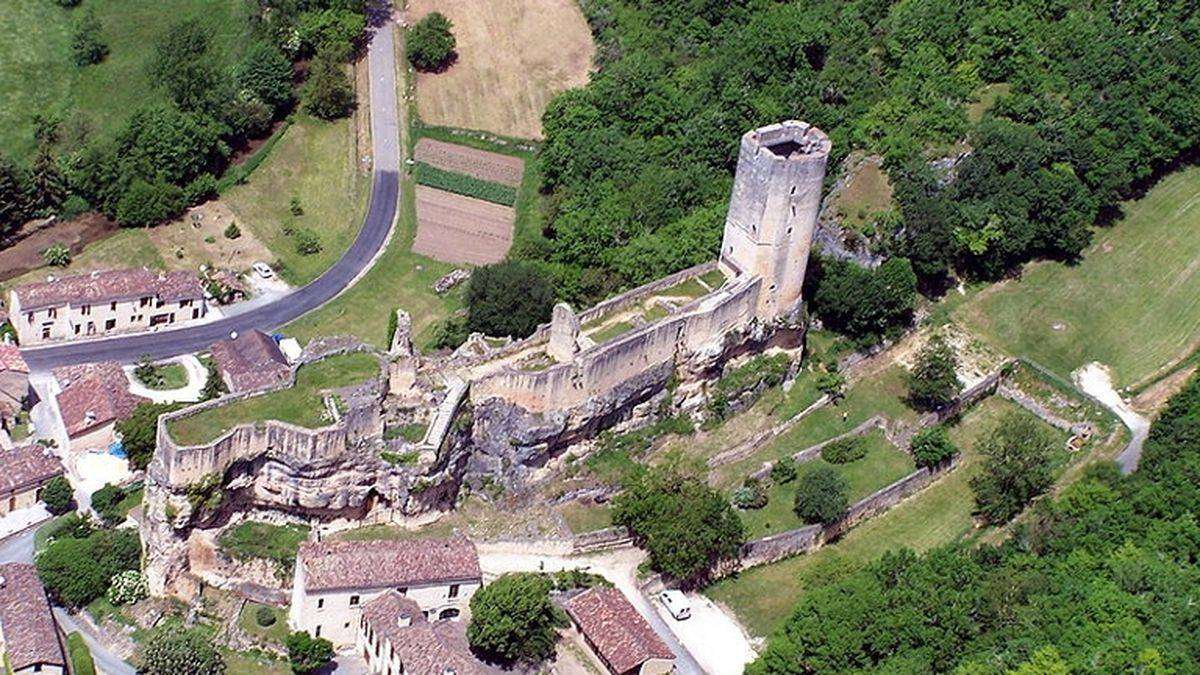 Aerial view | ©Bernardg / CC-BY-SA
Aerial view | ©Bernardg / CC-BY-SAHave at the sect!
12th century. The sect of the Henriciens ran from persecutions and took shelter in Gavaudun.
A sect founded by a hermit, Henri, who refused the usual religious service: churches themselves, the Mass, the songs… They were fanatical, they became looters!
So, in 1165, bishop of Périgueux Jean d’Assida besieged the castle and forced them to surrender.
D’Assida finally razed the castle. The legend says the sect left a treasure somewhere in the fortress…
Marguerite de Lustrac
Who’s the prettiest one?
Marguerite de Lustrac was born in the castle, in the 16th c. Marguerite? One of the prettiest French woman, at that time! French writer Brantôme even immortalized her in his book Les dames galantes (“Gallant ladies”).
Marguerite was the daughter of Antoine II de Lustrac and Françoise de Pompadour. A fine figure like her mother, friend of Marguerite of Angoulême, king François I highbrow sister! When Françoise died, plenty of poems were written.
One of them ended by: Des pleurs s'en est la Seine redoublée, Et je crois que moins n'en a fait la Garonne (“The river Seine cried a lot, so did the river Garonne″)! What a nice tribute…
As pretty as mum, rich, ambitious, Marguerite inherited the castle. She spent her life in the royal court among other princess.
Neither a heart nor a hand
Then in 1544, Marguerite married Jacques d'Albon de Saint-André, king François I’s captain. But her husband died at war! Pooh, she found another one, Geoffroy de Caumont, a Protestant, N’ayant ni cœur, ni main, ni jugement » said Théodore de Bèze (“he had neither a heart nor a hand nor a judgement”).
Brantôme wrote he wasn’t handsome, not in the least proud… He added Marguerite once married the most handsome and loyal man (d’Albon), then married his exact opposite! Caumont was poisoned in 1574 by Commarque brothers…
Siege and sticky crusts
Poor Marguerite was pregnant and all alone in her castle of Gavaudun. During wars of Religion, they besieged her. So she asked help of the future king Henri IV, who sent her his loyal friend Geoffroy de Vivans… who get back her castle.
Marguerite retired in her Milandes estate and gave the land of Gavaudun to her daughter Anne de Caumont: we know her, and the hard life she had in the castle of Castelnaud...
Lucky at cards, unlucky…?
In the 17th century, lord of Gavaudun was a gambler and lost plenty of games. One day he had a pretty bad idea: to bet his castle! He lost it, of course.
And people wrote a song about that, while king of England James II took shelter in France in Louis XIV’s court…
Le roi Jacques et Gavaudun Ont tous deux un sort commun : L'un vient de perdre l'Angleterre, Au jeu l'autre a perdu sa terre...
(“King James and Gavaudun both have a common fate: one lost England, the other one lost his land at cards”)
Several owners succeeded one another… until the French Revolution. In 1793, the castle was probably still “perfectly fit to live in”. But they ordered its demolition…
The visit of Gavaudun
Sitting on a 300 metres long rock, the fortress of Gavaudun is impregnable! Look at those high, high walls… The primitive keep dates back to the 12th c., re-raised in the 14th c.; it has 6 floors. The former main building was 30 metres long and 10 metres large. Inside, we had a ground floor and a storey.
But its outside wall was only 0,70 centimetres thick! Strange thing, for a defensive fortress, isn’t it? It seems that Gavaudun, impregnable from every side, didn’t need strong walls to protect itself… Because, anyway, no one could climb or reach the castle with a cannon ball… no one!
